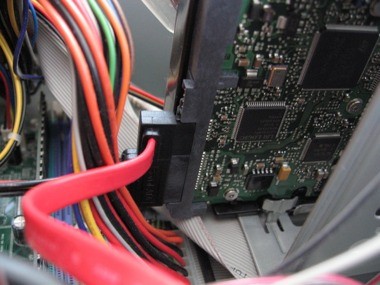“True stability results when presumed order and presumed disorder are balanced. A truly stable system expects the unexpected, is prepared to be disrupted, waits to be transformed.” ~ Tom Robbins This wasn’t the entry I expected to post this week. Last week the death rattle of my hard drive whirred loudly, and the drive crashed. It happens. I suppose it could have been much worse. But it taught me a few things – first being that any productivity system must have contingencies in place and be “prepared to be disrupted.” This is a lesson I learned several years ago when I lost a good amount of important data, because I wasn’t prepared. So fortunately this time, I was.
The Backup Plan
Though I’m not really a pessimist, I sometimes expect the worse. Last week, I was glad that I did. I had all my data backed up in 2 places. I also had my profiles for Thunderbird and Firefox, along with some other tools, backed up as well. That, along with my Web-based tools, allowed me to simply move to a backup machine, and pick up where I left off. All within a few minutes. Using the free SyncBack utility, I keep all my computers backed up on a server, and 2 external drives. Sometimes I think it’s overkill, but when I heard the familiar click-and-whirr of a dying drive, I didn’t get that sick feeling. I didn’t panic. I had everything backed up. Almost everything…
The Recovery
My last backup ran the night before, and the crash happened the next evening. So I had the day’s email and work on the dying drive. I grabbed my Ultimate Boot CD and used it to recover my mail files, copying them to a flash drive. Then, when that stopped working, I used an old trick that worked before. I stuck the drive in the freezer. Now, this is sometimes considered to be a tech myth, but it’s the second time it’s worked for me. A drive that won’t mount, and is not recognized, suddenly has 15 minutes or so of its life back. I’m not recommending it, for obvious reasons. It will most likely void your warranty, and may screw up the rest of your machine. I’m just saying, though possibly stupid, it worked for me. I loaded a Knoppix Live CD to view the drive and move the remaining files over.
The New Drive
Out of frustration comes opportunity – and a larger hard drive. I looked at it as a chance to configure the drive to operate better for my workflow. I partitioned the drive for dual boot – Ubuntu and WinXP. This time, I did something I’d wanted to do for a while. I created a shared place for my Linux home folder and all my shared info and profiles. This allows me to use the same mail folder and settings for Thunderbird, and the same profile, extensions, and bookmarks for Firefox. Using the Ext2 Installable File System program I can access the Ext3 formatted drive from Windows, and have one repository for both partitions. Though the episode was a hassle, I ended up with a more efficient way to work. The Verdict: I highly recommend not having your hard drive crash. Of course, that’s not something you can control. So the best alternative is to have a good backup and recovery plan. Then follow it. Alternatives: There are as many ways to plan backup and recovery as there are ways of working. The important thing is to find something that works for you and is relatively effortless. This will ensure that it gets done regularly and becomes a habit. Other Entries in this Series
Introduction Base Tools and Process Brainstorming and High Level Planning Tools
Tony D. Clark is an entrepreneur, writer, and artist who spends a lot of time talking others into profiting from what they know, being creative, and doing what they love. His blog Success from the Nest provides inspiration, tips, and advice for the home-based entrepreneur and those aspiring to be one – all served up with humor and cartoons.
